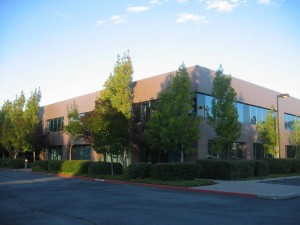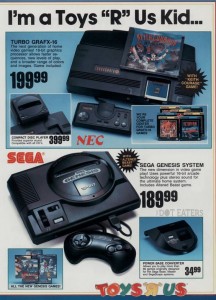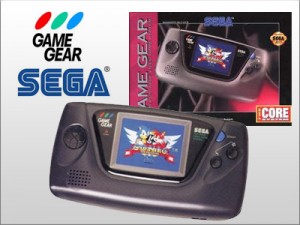The launch of the Genesis began a period of great change and growth within Sega. The company quickly grew in size and fortune, and a slew of hardware and software releases soon made it one of the most successful home console makers in history. The portable Game Gear soon followed, and Sega was fighting Nintendo and other competitors on multiple fronts in the battle for market share.

Instrumental in that campaign was Alan Cohn, who served as Sega of America’s National Director of Sales. It was his job to get the Genesis and its games into stores around the country, something that wasn’t always easy to do, given the stranglehold Nintendo had on retailers. As the man responsible for Sega’s national sales, he was tasked with hiring, managing, mentoring and supervising the company’s U.S. sales force, drive its sales volume via sales and marketing programs, and personally managed a few national accounts, which included such retail giants as Toys ‘R Us, Kay-Bee Toys, and Walmart.
We were fortunate enough to recently chat with Mr. Cohn by phone about his time at Sega.
Sega-16: How did you start at Sega? You already knew both Michael Katz and Tom Kalinske, correct?
Alan Cohn: I had worked for both. When I started there, I was working for Michael Katz, who was president. Mike and I had worked together back at Coleco. He was in marketing and communications, and I was in sales, during the Cabbage Patch days. Then Michael was with Sega for a while, and then Tom Kalinske came in, who I had also worked with in a prior life at Matchbox Toys. Tom was the president after he left Mattel. So, it’s a short history of people… sometimes the names stay the same but the scorecard changes.
I was working at Matchbox and living in New Jersey, and I was recruited by a very good friend, David Rhodes (Vice President of Sales), who was with Matchbox and left after a couple of years to go to Sega. When he was able to get the commitment from the Japanese, he hired me, and we worked together and built the business together. Dave was in San Francisco, and I was living in New Jersey. I did not move to San Francisco; I was just managing the business from my satellite location. After two, maybe three years of working in New Jersey, they moved me to Chicago and I ran the business from there for about another year and a half.
Sega-16: What was the sales environment like at the time? I know Al Nilsen was there in marketing. It was a very small operation then, right?
Alan Cohn: We were all working together, interacting, of course. There was a lot of closeness, but sales were a different entity than what Al was doing in marketing. It was kind of a small family when I went over there originally back in April of 1989. It was an interesting scenario, where there was a joint venture that the Japanese at Sega had with the Tonka toy company. And Tonka, out of Minneapolis… they were a thriving toy company for years, you know, and for however reason it was concocted or designed, they were handling the sales, marketing, and distribution for the Master System. At the time when they [Sega] were ready to launch Genesis, the 16-bit platform, Tonka wanted the project but the Japanese said no. A very good friend of mine had gone to San Francisco to be the vice president of sales at the corporate office, and he hired me to run the country, with the commitment from the Japanese and the investment, that we would take on Genesis and everything else that came with the party, and we would build this business ourselves and without Tonka. That’s pretty much what started everything else when I went over there in April, so I put together a sales force nationally, and I handled some of the customers myself, and we built a business from day one, from ground zero, nationally.
At that time we had tremendous growth, you know. When we started with the 16-bit platform, it was $189.99 at retail and included Altered Beast. In May of 1991 we had a new marketing design and a product launched called Sonic The Hedgehog. All the brain trust put their heads together and decided that we were going to drop the price, include Sonic in the packaging, and go down to $149.99. Well, that became a great marketing coup, and it launched Sega into stardom because our main competitor was Nintendo. Then NEC came into the business, and they were trying real hard just to make it. It was a battle, but ultimately we won out the battle because Sega was acquiring great software. Sonic was strong, and there were many other factors that fit into the equation that catapulted us to stardom to what became a billion dollar company in a very short three to four-year period.
 Sega-16: What kind of support from Japan did you receive at launch? Did you have complete freedom to make sales decisions, or was Japan in control of the kind of strategies you implemented?
Sega-16: What kind of support from Japan did you receive at launch? Did you have complete freedom to make sales decisions, or was Japan in control of the kind of strategies you implemented?
Alan Cohn: Pretty much as an American company that was driving sales and marketing, we had a free hand in our business and our movement. As with everything else, there are people from Japan who came into the company. They brought in what we used to call “the spy,” somebody they would bring in from the corporate office to just kind of oversee operations and just look at the day-to-day… somebody who would probably be in touch with Japan. They had one guy when I first started who was not very westernized and didn’t speak very good English. He was there for about a year, and then they brought in a young individual who was very westernized – you know, educated in the States – and he was very supportive and very good to work with. He understood the American needs and our direction. Otherwise, we pretty much had a free hand in doing what we needed to do. They kind of left us alone, for the most part.
Sega-16: How big of a challenge was it to pitch the Genesis to retailers early on? We know of Sega’s battle to get Walmart to accept it, but what about other retailers?
Alan Cohn: We had a pretty good amount of resistance initially from the likes of Walmart and K-Mart. They were staunch Nintendo supporters, and for that reason they were not embracing what we were doing and what we were saying. Toys ‘R Us was a very strong supporter from day one; they were doing monster numbers with Sonic The Hedgehog… Kay-Bee Toys, Target… but it was hard getting our point across to these guys because of Nintendo’s strong hold. I think Nintendo was very, very difficult in… you might want to say “allowing” us to get into the game at Walmart and K-Mart. I was handling both of them myself, at the time, and it was like moving mountains to get ourselves noticed. We had done some testing with K-Mart, and it was going to be the old guard of buyers at K-Mart. They just weren’t very embracing. You know, slowly but surely we would break them down, but it was a tough row to hoe during that first four-year stretch that I was there.
The growth was tremendous, though. Again, when I started there in April of ’89, we had a new system and we had no business. We started the run, and we went from zero to $122 million in the first year when our forecast was for about $40 million. So, we had a tremendous first year with Genesis, and subsequently the next few years after that we had growth every year. When we launched the color Game Gear, we had a quick step up on Nintendo because Game Boy was black and white. Then the barriers got more difficult with Sony, and that took a lot of steam away from Sega in hardware. Sega lost its position with hardware, where its strength was probably more in software.
Sega-16: That growth made the company atmosphere change, right? I’ve heard many Sega people comment about that happening.
Alan Cohn: Like I said, in the first four years, I think we achieved a billion dollars in sales. The company was growing by leaps and bounds not only in volume, which is a good thing, but also in personnel, which is not always a good thing. From my perspective, we lost our family atmosphere, and it became very bureaucratic and political.
But, you run a big business, so you obviously need a lot of people, but you lose a little of the flair sitting around a round table making decisions with a bunch of chiefs and a bunch of layers. We were enjoying and growing the business simultaneously, and we kind of like a family, if you will, in 1989-1992. Then things started to grow, and when things grow and you get big and have success, the dynamic changes. I think that’s what happened over there.
Sega-16: Former Director of Product Development Clyde Grossman once described Sega during the early Genesis days as “a startup with money.” That sounds a lot like what you’re describing.
Alan Cohn: Yes, it was. We had the commitment and investment from the Japanese, who were very supportive with money, and we were lucky. Let’s face it; we were lucky. We had a good product – good hardware and the software was good, and we had a good marketing plan by very diligent people, and the business grew over the next three or four years. Something was going right and in our favor (laughs). It was a fun environment… a fun atmosphere, but things change. Things change in life, and that’s what you have to deal with.
Sega-16: Do you think the backwards compatibility of the Genesis with the Master System was something that helped its sales, or was more like a gesture of good faith from Sega to its customers?
Alan Cohn: That’s a good question. I think it was more of a good gesture. You can talk towards compatibility without cutting out the people that supported the Master System being a good thing for us. It was well-received and was a good marketing statement, but I think that in this business, like in any electronic business and in our industry, you’re moving from six months to six months with the newest product – the next best thing, the next dimension, the next generation – everybody wants it. I think it was a great idea just to have in your back pocket for those who liked the compatibility issue. It’s tough to measure, but I think it was more of a positive than anything else. It was good to have.
 Sega-16: The Game Gear was a more powerful system than the Game Boy, but Nintendo had a huge lead over Sega in sales.
Sega-16: The Game Gear was a more powerful system than the Game Boy, but Nintendo had a huge lead over Sega in sales.
Alan Cohn: Right. There’s no question about the lead, the units Nintendo had in the marketplace initially. Game Gear was exciting; it was color and the software was good. That helped rocket the company, probably from $300-$400 million of sales to the billion dollar mark, relatively within a short two-year period.
Sega-16: So it was pretty strong right out of the gate.
Alan Cohn: Yes, it was. It was very good. The price was right, and like anything else, it was the right time for the next generation of product… to launch a color, portable unit. That was a good move on Sega’s part.
Sega-16: What do you consider to be your greatest achievement from your time with Sega?
Alan Cohn: I would say that it was being able to form an integral part of the team that launched Genesis… being able to bring that new platform to market and be very successfully nationally at doing so. I think that was a very strong time in my life, when you take a company from zero, from the ground floor, right to the top in a very short period of time. You know, $122 million the first year, $150 the second year, $400 the third year, and a billion the fourth year – you have to feel good about your achievement. I always say that from day one, product is king, but it takes a good team and a collaborative effort to finding and achieving a success level. I think that was the crowning achievement, and we should all feel pretty good about that.
On a side note, we all got along, we all liked each other, and we all worked very well together. That made it even more of a bonus for the people that were instrumental in building this business.
Sega-16: Why did you leave Sega?
Alan Cohn: I left the company in 1994, and I stayed in Chicago. I’ve been in the toy business a long time, so it was a very simple change for me. In those days, jobs were plentiful, and recruiting was quick and easy.
Our thanks to Mr. Cohn for taking the time to chat with us!

Good article. I love how he skirted around the last question. Hilarious! C’mon you can say it. Japan and Sega USA couldn’t agree on anything, sega was pissing money away like no tomorrow., Saturn? 32x? Yup, unfortunately it was all coming crashing down.